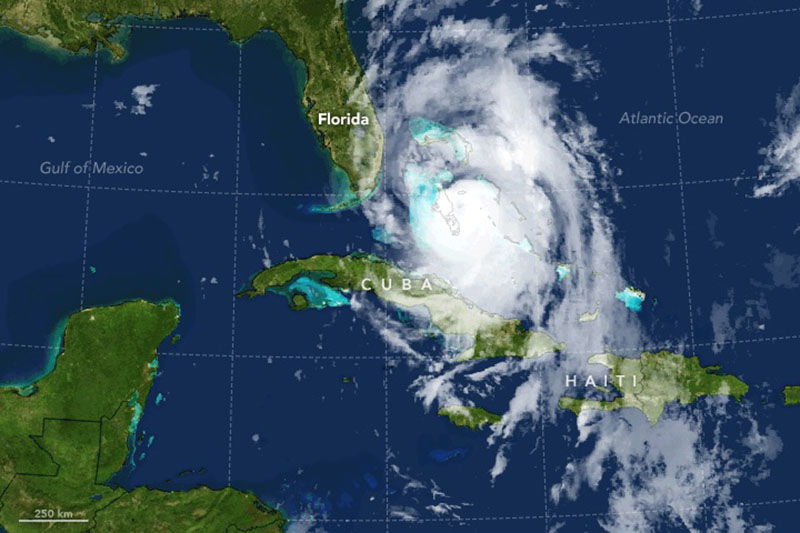(Bloomberg) — With top winds of 140 miles (225 kilometers) per hour, Hurricane Matthew could be the strongest storm to hit the U.S. since 2005, and among the costliest as it bears down on Florida’s East Coast.
The Category 4 storm is expected to make landfall near West Palm Beach and Melbourne overnight and then track north along the Atlantic coast racking up as much as $50 billion in economic losses. At least 1.5 million people have been ordered to flee its path with evacuations under way in Georgia and South Carolina as forecasts call for the storm to continue north into the weekend.
The U.S. hasn’t been hit by a major hurricane with winds of 111 miles per hour or more since Wilma struck Florida in October 2005. Katrina, also in 2005, caused about $154 billion in damage, making it the costliest in U.S. history, according to the National Oceanic and Atmospheric Administration. Matthew has already devastated the Caribbean, killing at least five people on Haiti and postponing the country’s presidential election set for Sunday.
“They have never had a major hurricane hit from Cape Canaveral northward to Georgia in the past century,” said Jeff Masters, co-founder of Weather Underground, in Ann Arbor, Michigan. “It is certainly the most dangerous one since Sandy, and the most dangerous for Florida since Wilma.”
Life-Threatening Winds
Matthew’s top winds jumped to 140 miles per hour, up from 125 mph, in a matter of hours Thursday as it moved across the Bahamas about 180 miles southeast of West Palm Beach, the U.S. National Hurricane Center said in an 11 a.m. advisory. People caught without shelter in the hardest hit areas face life-threatening winds, damage to buildings, roads and bridges, and the loss of power and communications that could render places uninhabitable for weeks or months, according to the National Weather Service. The storm surge could reach 9 feet in some places.
NextEra Energy Inc.’s Florida Power & Light utility, the state’s largest, said as many as 1.2 million customers could lose power. More than 90% of flights using Miami International Airport have been canceled, according to a statement. Most airlines were expected to suspend operations at noon. Matthew has shut the Buckeye oil terminal in Freeport, Bahamas, and could disrupt petroleum shipments along the U.S. East Coast. Orange crops are seen suffering little damage.
Economic Losses
Depending on Matthew’s exact track and strength, damages could reach $50 billion, according to Chuck Watson, a disaster modeler with Enki Research in Savannah, Georgia. Bloomberg Intelligence analysts Jonathan Adams and Jeffrey Flynn, citing Kinetic Analysis data, predict $35 billion in economic losses.
“The highest reasonable estimate is $50 billion,” Watson said. “And $25 billion or less is most likely depending on exactly how close to the coast and how strong the storm is at landfall. It’s got a really good shot at the top 10,” costliest storms.
Twelve U.S. power generators, including two nuclear plants, are in the storm’s path, according to data compiled by Bloomberg. One nuclear facility, NextEra’s Turkey Point in south Florida, is just outside the storm’s projected path. NextEra and Duke Energy Corp. said they would shut their reactors hours ahead of the onset of hurricane-force winds.
Worst Case
The key to how much damage Matthew causes will be its track as the strongest winds extend about 60 miles from its center, the National Hurricane Center said.
“I would say off the top it is way too premature to quantify losses,” Steve Bowen, a director and meteorologist with Aon Benfield in Chicago, said by telephone. “Any slight deviation to the east or west could conceivably mean several billion dollars of damage.”
The worst case would be for Matthew’s eye, with the strongest winds and highest storm surge, to track along a large stretch of Florida’s coastline, said Masters. There is also a chance Matthew could wobble, leaving the worst of the storm out at sea, he said. Hurricane Floyd in 1999 followed a similar path as Matthew, but never came ashore in Florida.
Bloomberg News by Brian K. Sullivan





